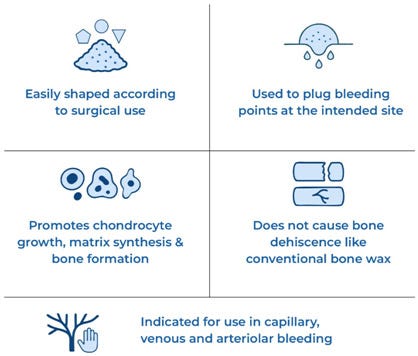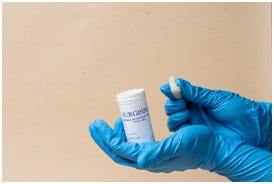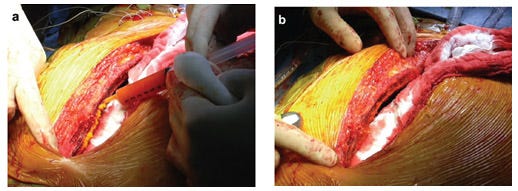SURGISPON® Putty: The Next-Gen Haemostatic Agent for Sternotomy Bleeding
Controlling bleeding during cardiac surgery especially at the sternotomy site is essential to prevent complications such as infection, wound dehiscence, and excessive blood transfusions. For more than a century, bone wax has been widely used to seal bleeding bone edges. However, its non-absorbable nature often contributes to delayed bone healing, foreign body reactions, and an increased risk of postoperative infections [1,2].
Today, modern surgical practice is evolving and so are the tools. Increasingly, cardiac and thoracic surgeons are replacing bone wax with gelatin sponge powder putty, a biodegradable, versatile, and clinically proven haemostatic agent that provides precise control, promotes bone healing, and significantly reduces postoperative complications.
One such advanced solution is SURGISPON® Putty, a next-generation gelatin sponge powder putty specifically designed to overcome the limitations of traditional bone wax.
What Is SURGISPON® Putty?
SURGISPON® Putty is made from highly purified pharmaceutical-grade gelatin and can be used dry or mixed with sterile saline or thrombin to form a putty, paste, or mousse, depending on surgical need.
Its versatile nature makes it ideal for:
- Irregular bone structures
- Deep fissures and cavities
- Sternal edges in sternotomy
- Cranial, spinal, and orthopaedic procedures
Characteristics of SURGISPON® Putty

These properties make SURGISPON® Putty ideal not only for cardiac surgeries but also for cranial, spinal, and orthopaedic procedures [3].
Key Benefits at a Glance

How to Prepare and Apply SURGISPON® Putty
SURGISPON® Putty allows surgeons to customize the viscosity for maximum control. Here’s how to prepare and use it effectively:
Step 1 — Open the envelope of SURGISPON®container powder

Step 2 — Add 3–4 mL/g sterile saline or thrombin for a putty, 4–5 mL/g for a paste, or 6–7 mL/g for a mousse. Stir until desired consistency is achieved

Step 3 — Compress the mixture with gloved finger into the bottom of the container/beaker (to avoid dispersion of the powder)

Step 4 -Smear or press the doughy paste against the bleeding surface
Step 5 — Remove the excess paste once haemostasis is achieved
Clinical Evidence Supporting Gelatin Sponge Powder Putty in Cardiac Surgery
A prospective randomized study compared absorbable gelatin powder(Spongostan®) with traditional bone wax in 557 patients undergoing cardiac surgery. The putty was applied after sternotomy and before chest closure.
Key Results:
- Total blood loss:Gelatin group: 415 mL vs. Bone wax group: 580 mL
- Chest reopening for bleeding: 4.7% (gelatin) vs. 7.3% (bone wax)
- Superficial infections: 0.7% (gelatin) vs. 1.1% (bone wax)
- No deep sternal infections in either group
These results strongly support the adoption of absorbable gelatin powder for safer, more effective haemostasis in cardiac surgery [4].

Fig. 1. Gelatin preparation (1–2 g of the soluble powder is diluted in 2–3 mlof saline, then 1 cc of rifamycin is added to the semisolid compound) can bemixed and spread by a simple digital pressure on the sternal section surfaces,just after sternotomy and at the end of operation, before chest close-up [4].
Conclusion:
As the demand for surgical precision, infection control, and faster healing continues to grow, gelatin sponge powder putty is becoming the preferred choice over outdated bone wax. Products like SURGISPON®putty offer biocompatibility, moldability, and full absorptionwithout compromising performance.
Whether you’re performing a sternotomy, a cranial discectomy, or a spinal procedure, SURGISPON® Putty delivers proven results, trusted by surgeons worldwide.




Comments
Post a Comment